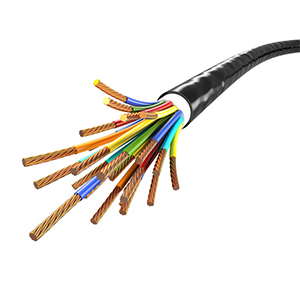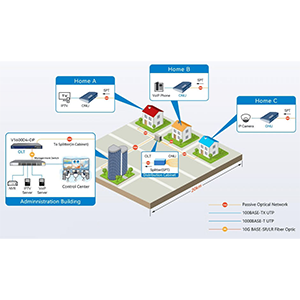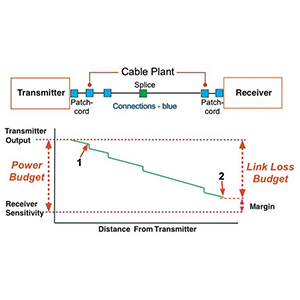I am very happy to introduce to you the basic concepts, working principles and applications of MPO to LC optical fiber connection in different fields. As an important optical fiber connection method, MPO to LC optical fiber connection can meet the needs of high-density and high-speed optical fiber connections, provides flexibility and scalability, and is suitable for a variety of network environments.
In this article, we will introduce the definition and basic principles of MPO to LC optical fiber connection, and help you understand how it realizes optical fiber connection between different interfaces. At the same time, we will also explain the characteristics and uses of MPO and LC fiber optic connectors to help you choose the right fiber optic connector to meet your needs.
Introduction to MPO to LC optical fiber connection
Definition and rationale:
MPO to LC optical fiber connection is a connection method used for optical fiber communication, in which MPO (Multimode Parallel Optical Fiber) connector and LC (Lucent Connector) connector are used to connect different types of optical fibers. This connection method is usually used to connect backbone fibers and branch fibers in high-speed fiber optic networks.
Fundamental:
The basic principle of MPO to LC fiber optic connection is to connect MPO multi-mode fiber optic connectors with LC single-mode or multi-mode fiber optic connectors. MPO connectors typically have 12, 24 or 48 fiber channels, while the LC connector is a single channel connector.
In an MPO to LC fiber optic connection, each channel of the MPO connector is connected to a single channel of the LC connector. In this way, multiple fiber optic signals can be transmitted simultaneously through one MPO connector and converted into a single channel signal supported by a single LC connector.
The optical fiber connector:
MPO fiber optic connector:
- Features: MPO connector is a high-density multi-mode fiber optic connector with 12, 24 or 48 fiber channels. They are commonly used in data centers and high-speed network applications to provide fast and reliable fiber optic connections.
- Purpose: MPO connectors are widely used to connect trunk optical fibers, optical fiber distribution racks, optical fiber switching equipment, etc., to achieve high-capacity optical fiber transmission.
LC fiber optic connector:
- Features: The LC connector is a small single-mode or multi-mode fiber optic connector with a single fiber channel. They are generally smaller, easier to use, and provide reliable fiber optic connections.
- Purpose: LC connectors are widely used in data communications and network equipment, such as fiber optic switches, fiber optic transceivers, network interface cards, etc., to connect individual fiber optic devices.
Usage of MPO to LC fiber optic connector:
The main purpose of the MPO to LC fiber optic connector is to achieve interoperability of fiber optic connections in high-density fiber optic networks. They are commonly used in data centers, computer rooms and enterprise networks to connect backbone optical fibers and branch optical fibers, optical fiber modules and equipment, etc. This connection method can provide high-speed, high-bandwidth optical fiber transmission and facilitate the management and maintenance of optical fiber connections.
Application fields of MPO to LC optical fiber connection
data center:
MPO to LC optical fiber connections are widely used in data centers to meet the needs of high-density and high-speed optical fiber connections. The following are its applications in data centers:
-
Backbone optical fiber connection: Data centers usually require backbone optical fiber connections to different devices, such as fiber optic switches, routers, and servers. MPO to LC fiber optic connector can realize high-density connection of trunk fiber by connecting MPO multi-mode fiber optic connector with LC single-mode or multi-mode fiber optic connector, thereby providing fast and reliable data transmission.
-
Optical fiber distribution system: The optical fiber distribution system in the data center usually requires connecting the trunk optical fiber and the branch optical fiber. The MPO to LC fiber optic connector can be used to connect the backbone fiber to the LC connector on the fiber distribution rack or fiber switching equipment through the MPO connector to achieve high-density fiber distribution and management.
-
High-density optical fiber modules: High-density optical fiber modules in data centers, such as high-density optical fiber transceivers (QSFP, CFP, etc.), usually use MPO connectors. Through the MPO to LC fiber optic connector, these high-density fiber optic modules can be connected to the equipment supported by the LC connector to realize the transmission and exchange of fiber optic signals.
Optical Fiber Communication:
MPO to LC optical fiber connections are also widely used in the field of optical fiber communications, including the following aspects:
-
Long-distance transmission: MPO to LC optical fiber connector can be used in long-distance optical fiber transmission systems. By connecting the MPO connector to the LC connector, optical fiber signal transmission is realized. This connection method can provide high-speed, high-bandwidth fiber optic transmission and provide reliable connections over long distances.
-
Network expansion: MPO to LC fiber optic connector can be used for network expansion applications, including topology expansion of fiber optic networks and connections between devices. Through the high-density characteristics of MPO connectors, more connection points can be achieved in the optical fiber network and support optical fiber connections between more devices.
-
Fiber optic switch and router connection: MPO to LC fiber optic connector can be used to connect fiber optic switches and routers to other devices or networks. Through MPO connectors, high-density fiber optic connections can be provided to meet the high-speed data transmission needs between fiber optic switches and routers.
MPO to LC fiber optic connectors are widely used, not only to achieve high-density and high-speed fiber optic connections in data centers, but also for long-distance transmission and network expansion in the field of fiber optic communications. This connection method provides reliable and efficient fiber optic transmission solutions.
Types and interfaces of MPO to LC optical fiber connection
MPO interface:
The MPO interface is a standardized interface for MPO fiber optic connectors. It comes in different types, two common ones being MPO-12 and MPO-24.
-
MPO-12 interface: MPO-12 interface refers to an MPO connector interface with 12 fiber channels. It is the more common type and is typically used for multimode fiber optic connections. The MPO-12 interface uses an MPO connector, in which the optical fiber channel is divided into 12 channels, each channel is responsible for transmitting an optical fiber signal.
-
MPO-24 interface: MPO-24 interface refers to an MPO connector interface with 24 fiber channels. It is typically used for higher density fiber optic connectivity needs, such as connecting high-density fiber optic modules in data centers. The MPO-24 interface uses an MPO connector, in which the optical fiber channel is divided into 24 channels, each channel is responsible for transmitting an optical fiber signal.
The MPO interface is characterized by high density and pluggability, which can realize the connection of multiple fiber channels and provide fast and reliable fiber transmission.
LC interface:
The LC interface is a small fiber optic connector interface used for single-mode and multi-mode fiber optic connections. It has the following two common types:
-
LC single-mode interface: LC single-mode interface is used for single-mode optical fiber connection. It uses a small single-channel connector with only one fiber channel, suitable for single-mode fiber transmission applications. LC single-mode interface is usually used for longer-distance optical fiber transmission, such as optical fiber backbone networks and long-distance communications.
-
LC multi-mode interface: LC multi-mode interface is used for multi-mode optical fiber connection. It also uses a small single-channel connector suitable for multimode fiber transmission applications. LC multimode interfaces are typically used for short-distance fiber optic transmission, such as fiber optic connections within data centers and local area networks.
The LC interface is characterized by being small, reliable and easy to use, suitable for various fiber connection needs and providing high-quality fiber transmission.
MPO to LC fiber optic connection uses MPO interface and LC interface to connect to each other to realize connection and conversion between different fiber types. This connection method can meet the needs of high-density and high-speed optical fiber connections and plays an important role in different application fields.
Advantages and features of MPO to LC fiber optic connection
High-density connections:
MPO to LC optical fiber connection has the advantage of high-density connection and is especially suitable for applications with limited space. Here are the advantages of its high-density connectivity:
-
Save space: MPO connector uses multiple optical fiber channels, which can connect multiple optical fibers in a small connector. Compared with traditional single-channel fiber optic connectors, MPO connectors can significantly reduce the number of connectors required and the space occupied. This enables more fiber connections and increases connection density and efficiency in space-constrained environments, such as data center cabinets and fiber distribution racks.
-
High port density: Due to the multi-channel design of the MPO connector, each MPO connector port can support multiple fiber channels. This enables more fiber connections on a limited number of ports, providing higher port density. This is very advantageous for applications that require a large number of fiber connections, such as high-density fiber modules and network switches in data centers.
Flexibility and scalability:
MPO to LC fiber optic connectivity provides flexibility and scalability to meet different network needs. The following are its characteristics of flexibility and scalability:
-
Multi-mode and single-mode conversion: MPO to LC fiber optic connector can realize conversion between multi-mode and single-mode optical fiber. By connecting MPO multi-mode fiber optic connectors and LC single-mode fiber optic connectors, you can convert between different types of optical fibers to meet the needs of different network equipment and applications.
-
Network expansion and upgrade: MPO to LC fiber optic connector allows flexible expansion and upgrade of the network. When fiber optic connections need to be added or changed, only the corresponding MPO to LC fiber optic connectors need to be replaced or reconfigured without changing the entire fiber optic infrastructure. This scalability makes network upgrades and expansions more convenient and cost-effective.
-
Hybrid connection: MPO to LC fiber optic connector also supports hybrid connection, which uses both multi-mode and single-mode optical fibers in the same connector. This flexibility allows the same optical fiber infrastructure to support different types of optical fiber transmission at the same time to meet the needs of different devices and applications.
In summary, the advantage of MPO to LC optical fiber connection lies in its high-density connection capability, which can achieve more optical fiber connections in a limited space. At the same time, it also provides flexibility and scalability to meet different types and needs of network configurations. This makes MPO to LC fiber optic connections valuable in data centers, fiber optic communications and other network applications.
Installation and configuration of MPO to LC fiber optic connection
Fiber optic cabling:
When performing fiber optic cabling for MPO to LC fiber optic connections, here are some guidelines and steps, including physical connections and connector installation:
-
Physical connection:
a. Make sure both ends of the fiber optic connection have the same type of MPO connector and LC connector.
b. Insert the MPO connector into the corresponding slot of the MPO to LC module, ensuring correct alignment and insertion.
c. Insert the LC connector into the LC port of the target device (such as switch, module, etc.), ensuring proper alignment and insertion. -
Connector installation:
a. Before proceeding with MPO connector installation, ensure that the fiber ends are cleaned and trimmed to ensure good connection quality.
b. Insert the optical fiber into the optical fiber channel of the MPO connector, and ensure that the end of the optical fiber is flat and free of excessive bending and damage.
c. Use appropriate tools and methods to secure the optical fiber in the MPO connector to ensure a solid physical connection.
Fiber optic testing:
After completing the installation of an MPO to LC fiber optic connection, fiber testing is necessary to ensure connection quality and performance. The following are some commonly used testing methods and tools:
-
Optical power test:
Use an optical power meter to test the power transmission of the fiber optic connection. Connect an optical power meter to the output port of the LC connector and record or monitor the transmitted optical power level. Make sure that the optical power is within the range that meets the standard requirements. -
Reflection loss test:
Use a reflection loss tester to test the reflection loss of a fiber optic connection. This test is designed to detect the reflection of optical signals at connection points. Ensure that reflection loss is within specified limits to reduce the impact of signal reflections on connection quality. -
Connectivity test:
Use a fiber optic tester or fiber optic LAN tester to test the connectivity of the fiber optic connection. These test tools can be used to send and receive optical signals to ensure that each channel connected is transmitting signals properly.
Please note that when installing and testing fiber optic connections, it is recommended to follow the relevant fiber optic cabling standards and manufacturer’s guidelines. In addition, some complex fiber optic networks may require professional fiber optic technicians to install and configure.
MPO to LC fiber optic connection compatibility and adapter
Compatibility points:
When making MPO to LC fiber connections, the following are some compatibility points. Special attention needs to be paid to fiber type and polarity:
-
Fiber type:
MPO connectors are commonly used for multimode fiber and single-mode fiber. When making MPO to LC fiber optic connections, make sure the fiber types between the MPO connector and LC connector match, that is, multimode to multimode connection or single mode to single mode connection. -
Polarity:
Polarity refers to the alignment of optical fibers in a fiber optic connector to ensure the correct transmission of optical signals. In the MPO to LC fiber optic connection, you need to pay attention to the polarity matching of the MPO connector and the LC connector. Typically, MPO connectors come in three polarity types, A, B, and C, while LC connectors have simple single-channel polarity. Make sure the corresponding MPO polarity corresponds to the polarity of the LC connector to ensure proper fiber connection.
Adapters and modules:
In order to achieve conversion and connection between different interfaces, commonly used adapters and modules can be used for MPO to LC fiber optic connections. Here are some common adapters and modules:
-
MPO-LC adapter:
The MPO-LC adapter is an adapter used to connect MPO and LC connectors. It usually has MPO connector jack and LC connector jack, which can realize MPO to LC fiber optic connection. MPO-LC adapters are available for different fiber types and polarity conversion. -
MPO to LC module:
The MPO to LC module is a module used to convert MPO connectors to LC connectors. It usually has a slot for MPO connectors and a jack for LC connectors, which can be used to directly connect MPO and LC optical fibers. This module is designed to simplify the installation and wiring process of MPO to LC connections. -
MPO to LC conversion cable:
MPO to LC conversion cable is a fiber optic cable that directly connects MPO and LC connectors. It has an MPO connector plug on one end and an LC connector plug on the other end, which can be used to connect different types of optical fibers and polarities.
These adapters and modules can be selected and configured based on specific fiber optic connectivity needs. Make sure to choose adapters and modules that are compatible with your network equipment and fiber type for reliable MPO to LC fiber optic connections. Additionally, follow the manufacturer’s guidelines and recommendations to ensure proper installation and configuration.
Summarize:
By reading this article, you will have a deeper understanding of the basic concepts, working principles and applications of MPO to LC fiber optic connections in different fields.
As a high-density, high-speed optical fiber connection, MPO to LC fiber optic connection provides you with reliable data transmission and communication, as well as flexibility and scalability.
We look forward to exploring the advantages and features of MPO to LC fiber optic connections with you and providing reliable solutions for your fiber optic connection needs. If you have any further questions or needs about MPO to LC fiber optic connections, please feel free to contact us. Wishing you better experiences and results in the fiber-connected world!




